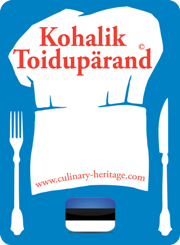
Those applying for the international Culinary Heritage label should be able to demonstrate clear connection with their respective region, which means that the applicant actively works for promoting local life by serving, providing or producing food that:
- is grown as an agricultural product and produced in that specific region;
- is grown as a fishery product, produced or caught in that specific region;
- carries local cultural heritage and culinary culture.
It means that the major share of raw materials and larger part of additional value of either catering service, food production or food processing must be from that specific region and the product must have clear connection with culinary traditions of the region.
In order to differentiate Culinary Heritage food from other, caterers should use special labels to turn attention of their guests to regional traditional character of products. Caterer should at all times offer at least one dish that correspond to the above criteria.
The owner of Culinary Heritage label is Swedish South East Skåne Committee of Cooperation (SÖSK). European coordinator of the Culinary Heritage network represents the label owner. Graphical image of the label is protected under EU laws as a trademark.
Only companies accepted into the network and officially approved partners have the right to use the label logo.
In Estonia MTÜ Eesti Maaturism (Non-Profit Organisation Estonian Rural Tourism) is the contractual partner of Culinary Heritage.
First Culinary Heritage labels in Estonia were issued on 30 April 2016 to Hiiumaa companies. Today all those caterers are also represented on the Estonian Culinary Route.
Caterers with Culinary Heritage label on the Estonian Culinary Route
Source: Culinary Heritage
